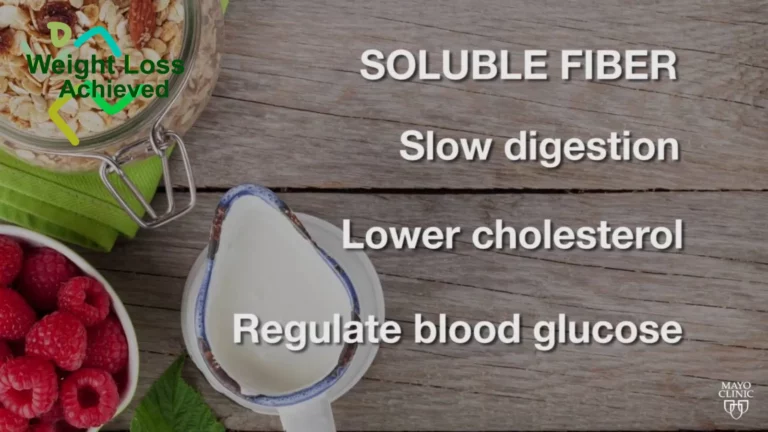The Truth About Hoodia: A Comprehensive Review to see if Hoodia Works for Weightloss a full review.
A whisper of a desert plant ripples through the weight loss community, promising a natural solution to curb insatiable appetites.
Hoodia gordonii has taken the spotlight, but what truths lie beneath its prickly exterior?
This review ventures beyond the hype to uncover the complexities of appetite control and the role natural suppressants like Hoodia may play.
Venturing into the thirsty landscapes of South Africa, the use of Hoodia gordonii spans centuries yet finds itself in the crucible of modern science.
The plant’s usage in dietary supplements and the scrutiny it faces from scientific investigation speaks to an ever-growing pursuit for weight loss aids.
Our understanding of this succulent’s powers and limitations emerges as a narrative of tradition versus evidence.
Let us dissect this enigmatic botanical phenomenon, from the intricacies of its appetite-suppressing molecules to the clinical evidence assessing its weight control credentials.
Bridging the gap between anecdotal promise and scientific validation, this comprehensive review illuminates the truth about Hoodia: its potential, its perils, and its place in the future of weight loss interventions.
Table of Contents to See if Hoodia Works for Weightloss a full review
Appetite and Weight Regulation
Weight management and healthy eating are central to overall well-being, making understanding appetite and weight regulation essential.
The hypothalamus, a small but crucial part of the brain, plays a key role in this regulation.
It monitors the body’s energy needs and signals when to eat and when to stop.
This complex process involves various hormones and peptides that feedback to the hypothalamus about the body’s energy status.
One way that individuals attempt to manage their weight is through the use of appetite suppressants.
These are products or foods that aim to reduce hunger cues and consequently decrease food intake.
In recent years, Hoodia gordonii, a succulent plant from South Africa, has gained attention due to claims of its appetite-suppressing properties.
Some believe this plant tricks the brain into feeling full, bypassing the normal hunger signals sent by the hypothalamus.
However, scientific research providing conclusive evidence of Hoodia’s effectiveness for weight loss is limited and mixed at best.
There are also concerns over potential side effects, which can include headache, nausea, and even more severe health issues, such as liver impairment.
Individuals considering Hoodia as a weight-loss supplement must consult with a healthcare provider before starting to ensure safety and appropriateness.
How the Brain Regulates Appetite and Food Intake
The hypothalamus acts as the control center for appetite and food intake, using hormonal and neural signals to initiate or suppress the feeling of hunger.
When the body requires energy, this brain region triggers hunger pangs, guiding one to seek nourishment.
Likewise, when enough food is consumed, it signals satiety, telling the body to stop eating.
Hoodia gordonii is thought to interact with the hypothalamus by mimicking the effect of glucose on brain cells.
The active compound in Hoodia, known as P57, is believed to influence the central nervous system, resulting in a reduced desire to eat.
Studies have indicated hormonal and metabolic changes following Hoodia administration, such as the alteration of regulatory peptides linked to appetite control.
However, understanding of Hoodia’s precise anorectic mechanism is not complete and is the subject of ongoing investigation.
The Role of Appetite Suppressants in Weight Loss
Appetite suppressants are substances that may contribute to weight loss by reducing hunger and thereby limiting calorie consumption.
They come in various forms, including prescription drugs, over-the-counter supplements, and natural extracts like Hoodia gordonii.
These products are thought to work by altering chemical and neural pathways associated with hunger.
While some appetite suppressants are FDA-approved and can be part of a structured weight-loss program, others, such as Hoodia gordonii, are sold as dietary supplements with less stringent regulations.
Despite popularity in the market, Hoodia lacks the depth of scientific evidence required to establish its safety and efficacy formally.
This inconsistency in data creates a gap in understanding, and without comprehensive research, the true impact on weight loss remains questionable.
Moreover, the potential adverse effects associated with Hoodia demand careful consideration.
Natural Appetite Suppressants: Focus on Hoodia gordonii
Hoodia gordonii is a cactus-like plant endemic to South Africa, traditionally used by indigenous peoples during long hunting trips to stave off hunger.
As a natural appetite suppressant, Hoodia has entered the global market, often featured in dietary supplements.
The purported active ingredient, a steroidal glycoside named P57, is said to be responsible for the plant’s hunger-suppressing abilities.
However, scientific investigations have struggled to replicate the effects of P57 in a meaningful way in humans, and questions remain regarding its effectiveness and safety.
Given the current scientific landscape, the claims surrounding Hoodia gordonii for weight loss lack strong evidence from well-designed human studies, and there are reports of negative side effects.
Consumers should exercise caution when considering herbal products claiming appetite suppression and weight loss benefits and prioritize products with proven safety profiles.
Always discuss any potential supplement use with a healthcare provider for personalized advice.
Understanding Hoodia gordonii
Hoodia gordonii has garnered global attention as a potential weight loss aid, principally for its supposed ability to suppress appetite.
Central to these claims is the presence of P57, a steroidal glycoside conjectured to influence feelings of satiety.
Nonetheless, the scientific affirmation of Hoodia’s physiological impacts remains under scrutiny.
There is a paucity of robust evidence to underpin its efficacy, and concerns about adverse side effects such as headaches, nausea, increased heart rate, high blood pressure, and impaired liver function have been raised.
Multiple studies—particularly one notable placebo-controlled trial—have reported no significant decrease in body weight or energy intake when using Hoodia gordonii.
Furthermore, doubts loom large over its long-standing reputation in the dietary supplement market, compounded by alarming side effects that challenge its once-promising use as a natural means to curb appetite.
Overview of Hoodia gordonii Plant and Its Source
Hoodia gordonii is a spiny, succulent plant native to the arid environments of the Kalahari Desert in Africa.
Propelled by a groundswell of consumer interest, this cactus-like flora has gained notoriety, chiefly for P57, an ingredient credited with sending ‘fullness’ signals to the brain.
This mechanism purportedly reduces appetite and subsequent food intake, making Hoodia an attractive option for those seeking weight management solutions.
Historically, Hoodia was consumed by the San Bushmen to temper hunger during long hunting excursions.
While science has probed its potential for stimulating fat metabolism, evidence for its effective translation in contemporary dietary supplements remains scant.
In laboratory settings, extracts of Hoodia gordonii, particularly organic solvent-derived ones, have been subjected to scrutiny for their putative role in appetite control and metabolic alterations in animal models, providing a springboard for further inquiry.
Traditional Use of Hoodia gordonii in South Africa
The traditional utilization of Hoodia gordonii traces back to the San Bushmen, an indigenous group hailing from South Africa.
These hunter-gatherers historically turned to the cactus-like plant during enduring hunting trips to curtail hunger and maintain endurance without the benefit of regular meals.
Hoodia gordonii’s succulence, a survival adaptation for the arid South African landscape, was key to the Bushmen’s expeditions across the Kalahari Desert.
This ethnobotanical practice signals the enduring relationship between the indigenous populace and the native flora, and their deep-rooted knowledge of herbal remedies and natural suppressants.
Extraction and Use of Hoodia gordonii in Dietary Supplements
In the realm of dietary supplements, Hoodia gordonii is celebrated for its alleged appetite-suppressing attributes.
Extracts from the plant are frequently leveraged in weight-loss-promoting products, touted for their anorectic activity.
Despite belief in the central nervous system-altering effects of its active compound P57, comprehension of its true mechanism of action is not entirely illuminated.
Hoodia’s transition from a traditional natural remedy to a commercial weight-loss supplement has not been accompanied by a robust portfolio of human clinical trials to substantiate its advantages.
Thus, the use of Hoodia extract in supplements is not only a testament to its longstanding ethnobotanical history but also indicative of the complex interplay between traditional knowledge and modern health claims.
Potential consumers must heed the possible side effects, including headaches, nausea, and cardiovascular implications, and are urged to confer with healthcare professionals before embarking on a Hoodia supplementation regimen.
Scientific Evidence on the Appetite Suppressant Properties of Hoodia gordonii
Despite the widespread acknowledgment of Hoodia gordonii’s purported effects, scientific studies detailing its appetite suppressant properties are scant.
The plant’s chemical profile has been the subject of exhaustive analyses; nevertheless, peer-reviewed research delving into the physiological influences of Hoodia gordonii is conspicuously meager.
The renowned compound P57, though celebrated as the cornerstone of appetite suppression, faces skepticism concerning its role in promoting such an effect.
Furthermore, the consumption of Hoodia gordonii in extracted forms has been implicated in a spectrum of physiological side effects, fomenting concerns over its safety profile.
It’s notable that non-peer-reviewed data, particularly from patent filings and promotional literature, tend to highlight the favorable outcomes associated with Hoodia gordonii use, potentially skewing perceptions of its risk versus benefit balance.
This emphasizes the need for discretion and a thorough evaluation of available evidence when considering Hoodia gordonii for appetite suppression and weight loss.
Mechanism of Action of Hoodia gordonii
Hoodia gordonii has been widely cited in weight loss circles for its supposed ability to curb appetite.
The plant contains pregnane glycosides, such as P57, which have been linked to the suppression of hunger pangs.
It’s theorized that these compounds may interact with the central nervous system, potentially affecting the hypothalamus—a region of the brain responsible for appetite control.
Research, however, has not been conclusive.
With few peer-reviewed studies validating Hoodia’s physiological effects, the mechanism by which it might reduce appetite remains unclear.
Thus, while its prevalence in the market is high, true understanding of how Hoodia gordonii functions is still an area ripe for exploration.
Caution is advised for consumers due to reported side effects, and further scientific validation of this plant’s safety and efficacy is needed.
The Active Constituents of Hoodia gordonii: Steroidal Glycosides
Hoodia gordonii’s appetite-suppressing reputation is largely attributed to its active components, steroidal glycosides, with P57 often highlighted as key.
High-performance liquid chromatography (HPLC) with UV and mass spectrometric (MS) detection methods are employed to analyze and quantify these compounds within the plant.
Despite the interest in these glycosides and methods developed for their quantification, there is a discrepancy between the chemical analysis and the clinical validation of their effects.
The concentration of these compounds does not necessarily correlate with significant appetitive control in human studies.
This highlights the necessity for a deeper look into the correlation between steroidal glycoside content and actual biological activity.
The Anorectic Mechanism of Action of Hoodia gordonii
The anorectic—or appetite-suppressing—potential of Hoodia gordonii is a topic of global intrigue, but the evidence base is not robust.
Although it is widely recognized for its supposed suppression of hunger, and extracts of the plant are marketed on this basis, peer-reviewed, scientific research is scant.
The plant’s pregnane glycoside P57, long believed to inhibit appetite, has recently come under closer scrutiny for side effects that imply caution should be taken regarding its consumption.
The selective presentation of benefits in non-peer-reviewed information further complicates the true understanding of Hoodia’s effects.
In light of the physiological side effects noted and the gaps in scientific confirmation, skepticism abounds around Hoodia gordonii’s role as a reliable and safe appetite suppressant.
Evaluation of Hoodia gordonii’s Appetite Suppressant Effects in Animal Studies
In animal model studies, Hoodia gordonii has shown some promise in the context of appetite suppression, although the translation of these findings to humans is not straightforward.
Side effects, such as raised blood pressure and heart rate, have been documented, hinting at its direct influence on cardiovascular function.
Experimental studies point to a smooth muscle relaxant effect mediated through β-adrenergic receptors, suggesting that Hoodia may have a sympathomimetic activity.
These findings call for a cautious approach when considering Hoodia gordonii for appetite control, emphasizing the need for more comprehensive studies to illuminate its effects and safety profile.
Human Studies: Assessing the Efficacy of Hoodia gordonii as a Weight Loss Supplement
Human trials specifically targeting Hoodia gordonii’s efficacy as a weight loss supplement are limited and results have thus far been inconclusive.
A study involving overweight women, where a daily intake of 2.
2 grams of Hoodia was administered, showed no significant changes in body weight or calorie consumption in comparison to a placebo group.
The occurrence of headaches, nausea, an elevated heart rate, high blood pressure, and liver function impairment associated with Hoodia consumption cannot be disregarded.
With the current body of research yielding no substantial proof of weight loss benefits, and given the reported side effects, the reliability of Hoodia gordonii as an appetite suppressant remains contentious.
Researchers continue to investigate, but for those considering its use, consulting a healthcare provider is strongly recommended.
Safety and Side Effects
When evaluating weight loss supplements, it’s not only the efficacy that should be of concern but also the safety and potential side effects.
Hoodia gordonii is no exception.
During a human study, participants who were given purified extracts of Hoodia experienced various side effects including nausea, dizziness, vomiting, and skin reactions.
There was also an increase in heart rate and blood pressure observed, suggesting a stimulatory effect on the cardiovascular system.
Beyond these immediate physiological responses, researchers fear there might be additional adverse effects of Hoodia that aren’t fully understood, which could be severe.
Furthermore, for people managing certain health conditions like diabetes or heart and liver diseases, Hoodia may interact negatively with their medications.
There’s also a particularly concerning link between the use of Hoodia supplements and liver damage.
Although it’s not possible to conclusively pinpoint Hoodia as the direct cause of liver damage due to the limited number of cases reported, it remains an area of significant concern.
Stimulatory effects on the central nervous system have also been reported, leading to side effects such as headaches, insomnia, nausea, and increased heart rate.
These effects hint at the need for caution and underscore the importance of discontinuing use if such adverse reactions occur.
Evaluating the Safety of Hoodia gordonii Extracts
A 15-day clinical trial on overweight women examined the impacts of Hoodia gordonii purified extract on safety, revealing concerns about the bioavailability of the weight loss-promoting compound P57.
This means that to achieve the appetitive suppression effects, one might have to consume high doses, which could result in potential side effects.
In animal studies, large doses of Hoodia gordonii did not affect fetal development, but for humans, more research is needed to assert safety confidently.
Despite some data suggesting that Hoodia gordonii might reduce energy intake to support weight loss, it comes with potential risks.
Indeed, severe hypertension and muscle wasting have been reported in association with its consumption.
A comprehensive literature review underlines the necessity for additional research into its mechanisms, optimal dosages, and potential side effects to ensure that Hoodia gordonii can be used safely.
Potential Adverse Effects of Hoodia gordonii
High doses of Hoodia gordonii, which may be necessary for it to effectively suppress appetite, are associated with a range of potential side effects.
Studies pinpoint issues such as headaches, nausea, an increased heart rate, high blood pressure, and impaired liver function.
Concerningly, a 15-day supplementation study involving overweight women showed no impact on body weight or calorie intake when compared to a placebo.
Even though Hoodia gordonii is often marketed for its appetite suppression capabilities, there is limited evidence to support its effectiveness in weight loss.
The compound P57, which is believed to influence the central nervous system and reduce appetite, lacks substantial scientific backing for its weight loss effects.
Therefore, comprehensive physiological studies are critical to understanding the appropriate dosage, potential side effects, and true efficacy of Hoodia gordonii in weight management.
Interaction with Medications and Health Conditions
Hoodia’s potential to interact with medications, particularly those used for blood sugar, blood pressure, or heart conditions, can have significant implications.
For instance, it might affect blood sugar levels and cause an unintended decrease in the effectiveness of these essential medications.
The National Center for Complementary and Integrative Health (NCCIH) has associated the use of Hoodia supplements with reports of liver damage, and while other side effects such as dizziness, nausea, and vomiting share qualities with stimulant effects, the lack of extensive research on its safety profile is concerning.
The safety of Hoodia during pregnancy, breastfeeding, or in combination with other supplements and medicines is poorly understood.
This ambiguity emphasizes the need for individuals considering Hoodia supplements to consult healthcare providers prior to use.
Such professional guidance is vital, particularly for those with existing health conditions or taking other medications.
The Importance of Consulting a Healthcare Provider before Using Hoodia gordonii
The potential serious adverse effects underscore the importance of consulting a healthcare provider before introducing Hoodia gordonii into your regime.
This is particularly vital for those with underlying health conditions or those consuming other medications that could interact with Hoodia.
High dosage requirements for clinical benefits bring additional risks, thus making medical advice an essential part of the decision-making process.
For people on medication for blood sugar, diabetes, or heart diseases, the interaction of Hoodia gordonii with these treatments could be dangerous without appropriate consultation.
Pregnant or breastfeeding women and children should also exercise caution.
Given the prevalence of counterfeit Hoodia products in the market, purchasing from reputable sources with authenticity certificates is advised, and in the event of adverse reactions, usage should be immediately ceased and medical attention should be sought.
The Future of Hoodia gordonii as an Appetite Suppressant
Despite its reputation and widespread use in weight loss supplements, Hoodia gordonii’s future as an appetite suppressant is marked by uncertainties and challenges.
The promise of Hoodia as a weight loss aid stems primarily from anecdotal accounts and initial research into its potential to suppress hunger.
However, the body of scientific evidence required to substantiate these claims remains disappointingly thin.
Moreover, adverse effects, such as increased blood pressure and elevated pulse, call into question the safety of long-term consumption of Hoodia products.
One possible active ingredient identified in Hoodia gordonii is the steroidal glycoside known as P57, which some scientists believe may mimic the effect of glucose on nerve cells in the brain, thereby creating a false sensation of satiety.
Yet, the exact mechanism of hunger suppression and the full spectrum of physiological effects of P57 are not completely understood.
Despite this lack of clarity, Hoodia gordonii continues to find its way into dietary supplements, often without robust clinical evidence supporting its efficacy and safety.
As we look to the future, research into the mechanisms and safety of Hoodia gordonii must become more rigorous if the plant is to remain a credible option for appetite suppression.
The scientific community will need to address concerns over potential physiological side effects, the appropriate dosages for consumption, and the interaction of Hoodia compounds with other substances in the body.
Current Research and Development in Hoodia gordonii Products
The commercial interest in Hoodia gordonii, largely driven by its purported ability to suppress appetite, has given rise to a flurry of studies and product developments.
Initially, the plant attracted considerable attention from both the dietary supplement industry and pharmaceutical companies.
However, in recent years, some of these companies have scaled back their efforts or withdrawn their interest entirely, possibly due to apprehensions about unidentified side effects or the challenges in consistently producing effective, standardized extracts.
Current research on Hoodia gordonii is characterized by a detailed understanding of its botanical properties and the chemical makeup of potential active compounds such as P57.
Yet, the leap from the identification of these components to the validation of their physiological impact in human studies has been challenging.
The road from laboratory findings to marketable and safe herbal products is fraught with hurdles, including establishing reliable dosing protocols, ensuring product quality, and conducting long-term safety studies.
Physiologically focused research is still developing, with peer-reviewed studies needed to evaluate the legitimacy of claims made by Hoodia proponents.
The effectiveness of Hoodia gordonii in weight management must be weighed against the documented adverse effects as well as the unexplored long-term consequences of its use.
Limitations and Challenges in Hoodia gordonii Studies
Despite Hoodia gordonii’s extensive characterization in the world of botany and chemistry, peer-reviewed studies focusing on the plant’s physiological effects in humans are comparatively scarce.
This scarcity of research creates a significant knowledge gap concerning the safety and effectiveness of Hoodia for weight loss.
Moreover, the withdrawal of several large pharmaceutical companies from the development of Hoodia-based products raises possible red flags about its viability as a weight loss drug.
This retreat of interest highlights one of the main challenges in studying Hoodia gordonii: the uncertainties surrounding its potential unreported side effects.
Examining the physiological impact of Hoodia without bias is critical.
Past reviews have concentrated on dissecting the proclaimed appetite-suppressing effects and aiming to isolate any physiologically active components responsible.
However, to provide a more comprehensive understanding, peer-reviewed research must be comprehensive, delving into mechanisms, dosages, and side effects.
Recommendations for Safe and Effective Use of Hoodia gordonii as an Appetite Suppressant
To ensure the safe and effective use of Hoodia gordonii as an appetite suppressant:
- Consistency is key: Take Hoodia approximately 15 minutes before meals to potentially aid in weight loss.
- Source matters: Only purchase Hoodia from trusted vendors who provide certificates of analysis to guarantee product authenticity.
- Be aware of side effects: Potential adverse reactions may include headaches, nausea, increased heart rate, high blood pressure, and impaired liver function.
- Monitor any changes closely.
- Exercise caution: Individuals with blood sugar control issues, diabetes, heart conditions, as well as pregnant or breastfeeding women, and children, should avoid Hoodia.
- Dosage and professional advice: Adhere to the recommended dosage of 400-800 mg per day and consult a healthcare provider before incorporating Hoodia into your health regimen.
- Buyers should practice due diligence, verifying product quality before use, and in the case of adverse events, immediate cessation and medical consultation are necessary.
By following these recommendations and advocating for more thorough research, consumers can navigate the complexities surrounding Hoodia gordonii with added caution and awareness.







